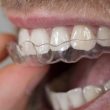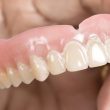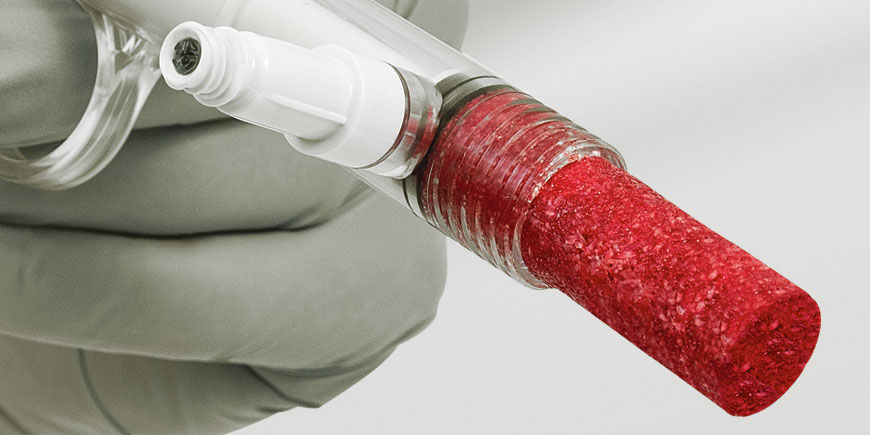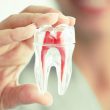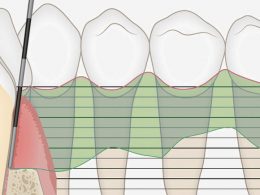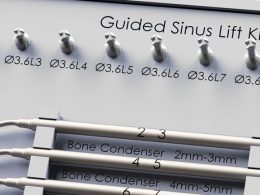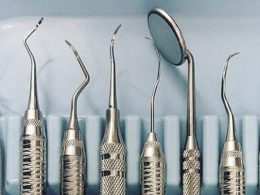Table of Contents
Bone grafts are essential to replace lost or infected bone in the jaws. Whether a tooth decay has destroyed your tooth and left a gap after extraction, or periodontal disease has loosened your teeth, a bone graft can repair and rebuild damaged bone to later support a dental implant.
Surrounding teeth could also loosen and eventually fall out if their supporting bone tissue is not properly treated, further complicating the situation. In these cases, without a bone graft, the dental implant would not have enough critical mass to anchor securely.
What is Bone Grafting?
Generally speaking, a bone graft is a surgical procedure that aims to solve joint and bone problems in any part of the body. Bone grafting is also known as a bone transplant, as bone is often removed from one site and placed in another.
It is a beneficial treatment to repair organs that have been damaged due to trauma, infection or degenerative processes. It is also useful for strengthening the bone around an implanted artificial device, as in total knee replacement surgery, for example. Bone graft surgery serves to fill in any area that lack bone and need it.
The bone used in bone graft surgery may come from your own body, from a donor or be completely synthetic.
Types of Bone Grafts
Bone grafts are available in a variety of substances. These bone substitutes can be biological (natural) or synthetic:
- Autologous/Autogenous Bone Grafting In this type of graft, the bone is taken from the patient’s own body. To perform an autologous bone graft, our Surgeons use bone tissue from the chin or other nearby area to reconstruct or replace the jawbone prior to dental implant placement. However, if the bone in these oral areas is not sufficient or adequate, the tissue graft can be taken from the hip, tibia or head.
- Allograft It is the one that is extracted from a deceased donor. However, before using the bone or other tissue, the corpse is thoroughly examined to determine if there is any infectious disease. The bone then undergoes a series of treatments to make it compatible with the receptor and minimize any immune reaction.
- Xenograft The xenograft is taken from an animal source such as a cow or a pig. The bone is carefully processed so that the tissue to be used has a high concentration of mineral components. Xenografts work well to rebuild bone because they act as a mechanical and biological placeholder in the jaw. They add physical support to the surgical site and the body replaces the xenograft with new bone over time.
- Alloplastic Graft They are composed of substances that do not come from humans or animals. They can be derived from natural sources, synthetic substances or a combination of both. These grafts can be made of hydroxyapatite, calcium carbonate and tricalcium phosphate. Hydroxyapatite is used very frequently for its strength and durability.
Reasons for Bone Grafting Treatment
There are several reasons why people may need a bone graft, and these can be cosmetic or functional. Here are the 3 conditions that most often require this type of surgery:
1- Periodontal Disease
Periodontal disease, also known as gum disease, can weaken the jawbone and cause teeth to loosen and fall out. The good news is that periodontal disease can be treated or reversed to some degree, making use of grafts, membranes and Guided Tissue Regeneration techniques.
2- Dental Implants Placement
The most common reason for a dental bone graft is to prevent bone loss after a tooth is extracted. These are called “socket grafts” because the bone graft material is inserted into the empty socket left by the extracted piece.
But if the extraction was done a long time ago and the bone is not enough to support the implant body, it will be necessary to undergo a bone graft, probably more extensive, before implantation. It may take 3-6 months for the bone graft to fully heal, integrate with the underlying bone and adopt its natural physiology.
When a tooth becomes loose, one of the first things the patient usually considers, is a dental implant. However, if the patient has had periodontal disease for a long period of time, it may be necessary to extract the teeth and place bone grafts to strengthen the bone and ensure the success of the implants.
In some cases it is also necessary to correct the descent or pneumatization of the maxillary sinus. A Sinus Lift involves lifting the lining of the cavity and grafting bone under it, so that there is enough bone structure for implants to be placed.
3- Alveolar Ridge Atrophy
Although dental implants are not going to be placed, it is often necessary to reconstruct and regularize the residual ridge to make fixed or removable prostheses.
Alveolar ridge atrophy can occur due to trauma, injury, periodontal disease or functional overload.
Bone grafting is used to fill in the ridge and make the maxilla has a more uniform and favorable anatomy to prosthetic rehabilitation.
What Does Bone Grafting Surgery Involve?
Bone grafting is a fairly simple procedure that can be performed under local anesthesia, however, if a large amount of mass needs to be grafted, general anesthesia may be required.
Initially, the graft material must be collected and prepared for insertion. A small incision is made in the gum tissue and then the bone is gently separated. The bone graft material is then placed on the affected or recipient site. The bone regeneration process can be favored by the use of:
- Collagen Membranes A thin collagen barrier (membrane) is placed under the gum surface and over the graft material. This membrane creates enough space for new healthy tissue to grow and prevents the soft tissue in the mouth from invaginate and invading the space that the new bone should occupy. This implies that the bone cells can migrate towards the protected area and grow naturally.
- Tissue Stimulating Proteins Emdogain is a compound of proteins derived from the enamel matrix and is generally placed on the affected site before suturing the gingiva. It is involved in the formation of acellular cementum in the tooth that provides a base to allow the periodontal union to occur. Tissue stimulating proteins help create lost support in areas affected by periodontal defects.
- Platelet-Rich Growth Factors A liquid with a high concentration of platelets can be used to create a blood clot at the wound site and promote its rapid healing. Recently it has been discovered that these factors also stimulate bone growth, generating denser grafts in a shorter period of time.
Finally, the gum is stitched in place and a follow-up appointment will need to be made within 10 days to assess the progress of the surgery. Well indicated, bone grafting is a highly successful treatment and a good preparation for future prosthetic and periodontal rehabilitations.
“The Treatment of Advanced Periodontal Disease and the Placement of Dental Implants, Are the Two Most Frequent Indications for Bone Grafting”.
DENTAL TIP
What Happens After the Intervention?
After the procedure, antibiotics are given to prevent postoperative infections. In some cases, pain relievers are also given. Most patients who receive bone grafts do not feel pain and do well, as long as they follow the directions and take the medication.
Our Surgeons will have to wait for the bone graft to fuse with the natural bone that is already in the mouth. Unfortunately, biological systems are very different and there is no exact time frame for this to occur.
It is not uncommon for the bone graft to take between three months and a whole year to integrate with the natural bones of the mouth. Regular check-ups will be necessary until complete its maturation and to be able to receive dental implants, if it is the case.
Are You Facing an Unaffordable Quote for Dental Treatment?
Are you thinking of getting cosmetic dentistry or dental implants in Venezuela? The rising cost of dental care in many countries is driving the dental tourism movement as people seek more affordable dental work abroad. If you are facing an unaffordable quote for dental treatment in your home country, DENTAL VIP could be a much cheaper alternative with savings of 60% or more.
Every year thousands of international patients visit Caracas to take advantage of high quality healthcare at affordable prices. Dental procedures in Venezuela are on par with treatment provided in any “developed” country of the world. The cost, however, is significantly less.
At DENTAL VIP we offer a wide range of world class dental treatments such as dental implants, crowns and bridges, smile design, dental veneers, oral surgery and zygomatic implants; among others.
Furthermore, we are available to assist you with transfer and accommodation options while visiting Caracas for dental care. Contact us today and make your next treatment in Venezuela!


